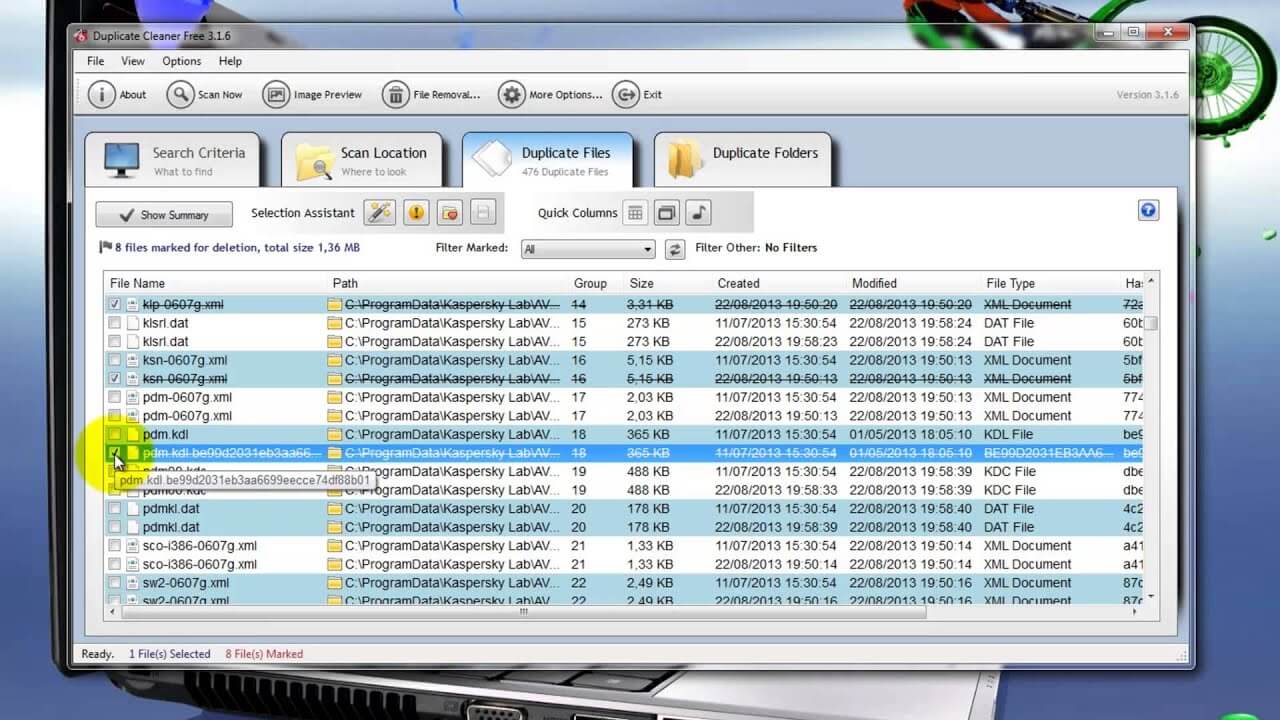
I mentioned earlier that I was able to set up a music library on my NAS so that I could play my music from any device on the network. Create a shared music library - NAS Problem #2 I haven’t used this for now, but it’s nice to know I have the option if space ever becomes an issue.
#Duplicate file cleaner network drives download#
Sure, you can download and try Gemini 2 for free.Īnother feature lets you find similar photos on all your storage drives, like five photos of your sleeping cat that look identical to the naked eye. So it even has an undelete feature, which I used to resurrect the photo.

It found hundreds of duplicate photos and other file types, but it also let me quickly choose which files to keep and which files to remove.Īt one point, I accidentally deleted a photo that I did want in two locations, but Gemini 2 knows the dumping of duplicates is so fun that you may get carried away and make a mistake. So I found my solution - Gemini 2: The duplicate file finder. But given how many files had more than one version now, I really couldn’t see an alternative beyond spending an entire weekend cleaning up the NAS drive by hand. In the past, when cleaning up duplicate files on NAS, I’ve manually identified the duplicates and deleted them. I felt pleased to have all my photos in one location, but I soon realized that I was creating mountains of duplicate photos. One early example was after backing up photos from my Mac, Macbook, iPhone, and iPad.

To save you this frustration, below are my three biggest tips to organize and clean up your NAS drive. Since you’re probably interested in a shared drive to better organize your digital life, it can be frustrating when faced with this very issue. When consolidating a lot of files to a central location, you create the possibility of organizational chaos. Redundancy means that when a single drive inside the NAS dies, the content is never lost because it is mirrored on the other drives.Ī shared drive sounds great. So I got a NAS and set it up with redundancy in mind. I tried backing up to the cloud, but the file sizes made it a challenge, and I had security concerns. I’m interested in media, so I have a lot of big files, which means stacks of external hard drives lying around. Doing something fun like creating a library of music on your NAS, which can then be accessed on any device, is rewarding and convenient.īut personally, I was most interested in NAS as a backup solution. For example, being able to access shared files across all your devices easily or the devices within a family or office is a real-time saver. There are many good reasons to set up a NAS. The NAS is a shared network that allows these multiple devices to access and share large amounts of data. In plain language, a NAS is a centralized file storage device that other devices and computers can remotely connect to.
#Duplicate file cleaner network drives free#
Free up a NAS and organize your remote storageīefore we get into my shared network drive tips, let’s start with the most basic question… Hopefully, in doing so, you can save your hair. I want to use my experience to help anyone out there who is thinking of going the NAS route.

Overall, it was a great learning experience, but there were definitely some hair-pulling moments. Once set up, I had a shared drive for all my devices.

As someone with many Apple devices, I recently decided to take the plunge and consolidate my data on a local NAS server.


 0 kommentar(er)
0 kommentar(er)
